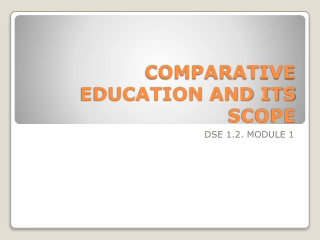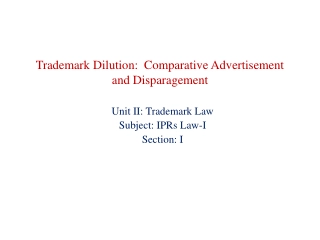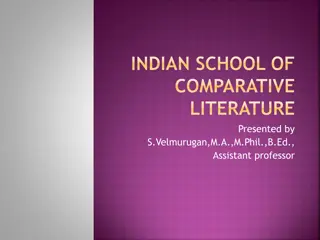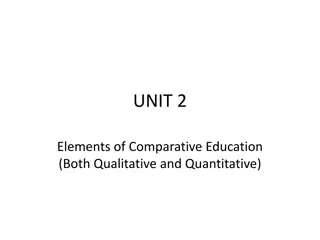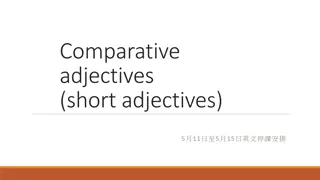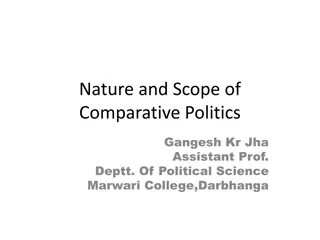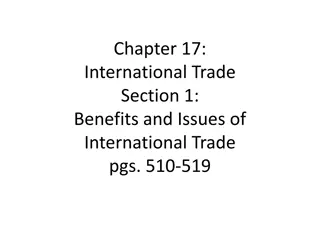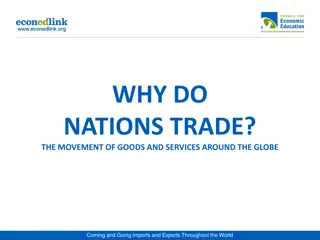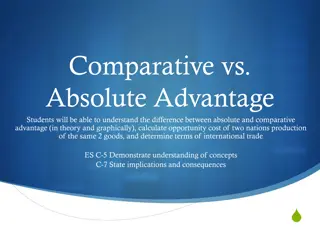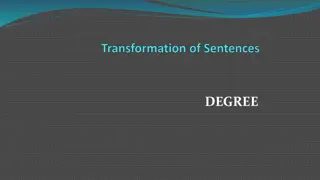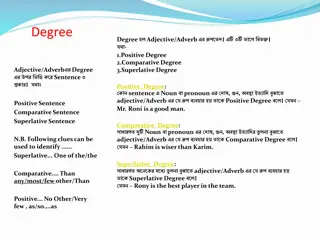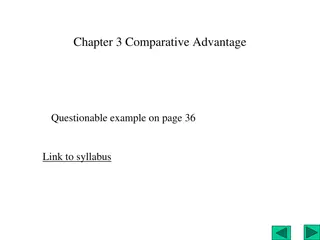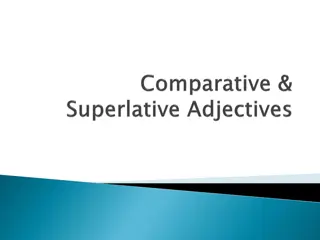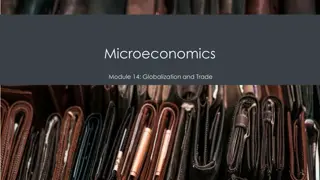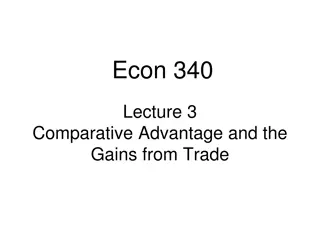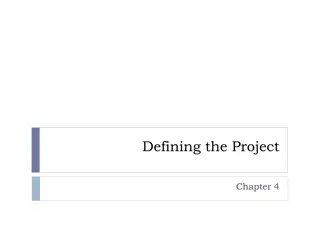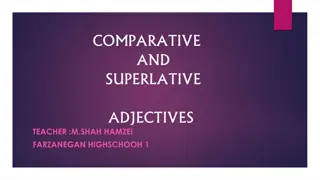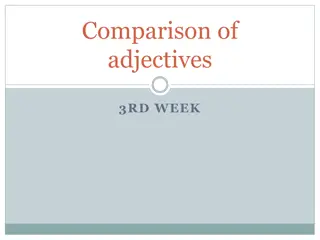Understanding Comparative Education: Scope and Aims
Comparative education involves studying educational theories and practices across different countries to analyze the relationship between education and society. It aims to explain educational systems, aid in the development of institutions, and form generalized statements applicable in various nations. The scope of comparative education includes examining subject matter, geographical units of study, ideological and thematic perspectives. Contributions from disciplines like government, sociology, and technology play a crucial role in shaping educational policies and practices.
Download Presentation

Please find below an Image/Link to download the presentation.
The content on the website is provided AS IS for your information and personal use only. It may not be sold, licensed, or shared on other websites without obtaining consent from the author. Download presentation by click this link. If you encounter any issues during the download, it is possible that the publisher has removed the file from their server.
E N D
Presentation Transcript
COMPARATIVE EDUCATION Maj/B.Eds-416 Ms. Shazia Ejaz B.Ed Secondary Spring (2020)
UNIT 1 Introduction to Comparative Education
Concept of Comparative Education Comparative education is the comparative study of educational theories and practices in various countries. Comparative education attempts to use cross-national data to test propositions about the relationship between education and society and between teaching practices and learning outcomes . Comparative education considers the implications of comparative studies for the formation and implementation of policies in education, social, national and international development.
Comparative education invites contributions from associated disciplines in the fields of government, administration, sociology, and technology and communications which affect educational research and policy decisions
Comparative education aims at: 1. Explaining educational systems, processes, or outcomes; 2. Helping the development of educational institutions and practices; 3. Emphasizing the relationships between education and society; 4. Forming generalized statements about education relevant in more than one country
The Scope of Comparative Education There are five perspectives that capture the scope of comparative education. These are; 1. The subject matter and content; this covers the essential components of educational systems such as structure, aims, content or curriculum, administration, financing, teacher education. 2. Geographical units of study; these comprises intra-national, international, regional, continental and global or world systems studies and analysis.
CONT 3. Ideological scope; this compares countries' educational systems on the basis of different political, social and economic ideologies. For example, democratic, communism, socialist, capitalist, free market and mixed economies. 4. Thematic scope; this scope focuses on educational themes, topical issues or problems and compares them within one or more geographical units. For example free primary and secondary education, universal primary education, education for all and universal higher education.
CONT 5. The historical scope; this deals with the study of the historical development of the discipline from the earliest (pre-historic) phase known as the period of Travelers' Tales to the modern phase known as the period of social science perspectives.
Definition of Comparative Education Comparative education has been defined in different ways by various authors but what is common in the definitions is the emphasis on the use of data from another educational system. Getao (1996) defined Comparative Education as a discipline, the study of educational systems in which one seeks to understand the similarities and differences among educational systems.
CONT J. King (2002), in his book Comparative Studies and Educational Decision expresses the view that Comparative Education is a discipline, which arranges our observations and conclusions in relation to the shaping of the future.
CONT Comparative Education according to Good (1962) is a field of study dealing with the comparison of current educational theory and practice in different countries for the purpose of increase and extending understanding of educational problems beyond the boundaries of one's own country.
The Purpose of Comparative Education The analytical study of these factors from historical perspective and the comparison of attempted solution of subsequent problems are the main purpose of comparative education. To become familiar with what is being done in some countries ... and why it is done, is a compulsory part of the training of all students of educational issues of the day. The purpose of Comparative Education is to perfect national systems with modifications and changes which the circumstances and local conditions would demand.
Methods of Comparative Education There are a number of working approaches used by researchers in their approach to the study of comparative education. It is important to note that methodology in comparative education, as in other educational disciplines, is determined by the purpose of the study. Like other social sciences, comparative education has been studied at different times of its development with different methodological approaches.
Descriptive Method This method was used in the 19thcentury because the main purpose then in comparative education was to incorporate the good points of another country. This approach therefore called for a detailed description of educational affairs of another country.
The Historical Method Approach: In this approach we study the modern educational problems. The method reveals the basis on which the modern education system is based. Knowledge gained at this point may help us in removing undesirable elements in the system and further strengthening of the desirable ones.
In this approach we also try to understand all those geographical, social, political, religious and linguistic factors which influence the educational system of a country.
Shortcomings of the method The data on which we base one study may not be reliable because in the collection of the same, due care is often not observed. As such the conclusions derived may not be very useful. One should therefore keep in mind that historical materials about education systems of various countries are usually not very reliable. This in turn limits the utility of historical data. it suggests the need for more research do make the data more reliable.
CONT The other shortcoming is that, historians are usually not impartial in their accounts. In most cases they want to conceal undesirable elements about the history of their own country and look on facts relating to other countries with some perceived bias.
CONT In this scenario the truth is not known. Consequently we cannot reach the right conclusions using this approach. The third limitation of this approach is that, the past is excessively emphasized. Consequently the study of comparative education can be said to be unbalanced.
The Analytical Method Approach This approach brings together the relationship that exists between the educational system of a country and its social, political and economical conditions. In any comparative study we have to use analysis. This is because through analysis one can separate the various elements and understand the importance of each self-sufficientlys. The analytical method is considered useful only when the social and educational organizations are compared.
CONT The analytical method therefore follows the four main aspects of analysis. i) Collect Educational Data: -This is where all educational information is gathered through descriptive and statistical methods and this forms the basis for the analytical method. ii) Interpretation of related data: - This involves interpreting social, political, economic and historical data which is compulsory in order to understand similarities and differences found in the educational systems of various countries.
CONT iii) Determining standard for comparison: -In order for us to compare the educational systems fairly, we need to do so by having a certain standard. This standard will help us compare the similarities and differences of the various educational systems. The analytical method often formulates these standards.
CONT iv) Interpretation and conclusion: From the above three aspects of analysis, we are able to interpret the collected data and make certain conclusions on the basis of comparison of the various educational systems of various countries.
Shortcomings of the method However, the analytical method approach is also faced with the following two limitations; i) This method does not pay adequate attention to the totality of the educational systems. ii)The method is also disposed to to ignoring the inherent similarity, which exists in educational systems in spite of the differences in educational systems of the various countries.
The Synthesis Method Approach This method has been largely supported by J.King a famous comparative educationist in his look "World Perspective in Education . In this approach, the study of comparative education from an international point of view is considered to be of great significance. In this approach the problems of education are considered and studied on an international frame.
This is evidenced by the fact that, when we study the problems of education in various countries, we find some universal truths in their inherent differences the main reason being that, there is much similarities in the needs and aspirations of the people of the globe.
The Scientific Method Approach This method was developed and population by Harold Noah in 1960, when he wrote a book entitled "Toward, a Science of Comparative Education". In this approach, he recommended the following procedure; i) Problem identification and review of literature ii) Definitions of central concepts, terms and indicators
CONT iii) Selection/sampling of units of study or cases or be studied iv) Data collection v) Data Analysis and manipulation vi) Interpretation of data -finding & results vii) Drawing of conclusions and recommendations
The Problem Solving Method Approach. This method was developed and popularized by Brian Holmes in (1964) in his look entitled "Problems in Education: A comparative Approach". He hired the ideas of John Dewey ( a famous American Educator) based on the five stages of reflective or critical thinking which Brian applied to the study of comparative education to solve educational problems. The stages are;
CONT i) Problem Identification ii) Problem Analysis iii) Proposed problem solutions iv) Specification of the context - this involves looking at the factors, and conditions that are likely to influence the outcomes of the proposed solution; such as, conservative mental states like traditions, morals and beliefs. Also it involves prediction of anticipated results - i.e. making informed guesses about expected outcomes.
CONT v) Comparison and conclusion; - This involves comparing the predicted outcomes (based on the proposed policy solutions) with the actual observable practices. It is more of an evaluation stage (i.e. have things worked out as anticipated?). It also involves making recommendations and conclusions from the observations, and then new lines of action are made.


